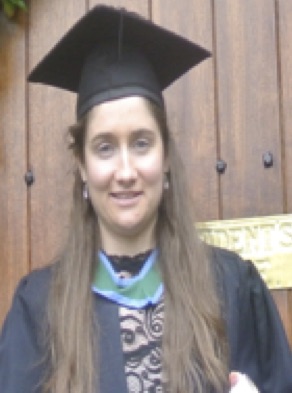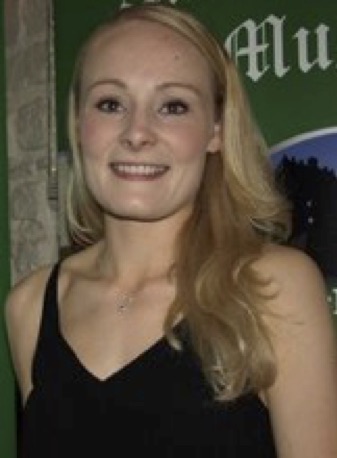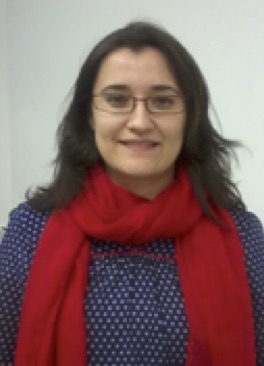Org. Synth. 2017, 94, 259-279
DOI: 10.15227/orgsyn.094.0259
Preparation of anti-1,3-Amino Alcohol Derivatives Through an Asymmetric Aldol-Tishchenko Reaction of Sulfinimines
Submitted by Pamela Mackey, Rafael Cano, Vera M. Foley, and Gerard P. McGlacken*
1
Checked by Aymeric Dolbois, Maurus Mathis, Estibaliz Merino, and Cristina Nevado
1. Procedure (Note 1)
A.
(S)-2-Methyl-N-(1-phenylethylidene)propane-2-sulfinamide 3. A 500 mL two-necked round-bottomed flask is equipped with a reflux condenser connected to a Schlenk line via gas inlet, a rubber septum, which can be substituted by a glass stopper at the end of the additions, and a Teflon-coated octagonal magnetic stir bar (4.5 × 1.0 cm). The flask is placed under a nitrogen atmosphere (
Figure 1a).
(S)-(-)-2-Methylpropane-2-sulfinamide 2 (63 mmol, 7.62 g, 1.0 equiv) (
Note 2),
acetophenone 1 (63 mmol, 7.34 mL, 1.0 equiv) (
Note 3) and anhydrous
THF (250 mL, 4 mL per mmol of ketone)) (
Note 4) are added, with the latter two added by plastic syringe (size: 10 and 20 mL, respectively). To the stirred mixture is added
titanium(IV) ethoxide via plastic syringe (126 mmol, 26.5 mL, 2.0 equiv) (
Note 5). The resulting pale yellow mixture is heated at reflux in an oil bath and the reaction progress is monitored by TLC (
Figure 2a) (
Note 6). Once complete (19 h) (
Figure 1b), the dark yellow reaction mixture is allowed to cool to room temperature and brine (200 mL) is added with rapid stirring before filtration through a pad of Celite (50 g) that is packed with
Et2O using a perforated filter funnel (10 cm diameter) supported with filter paper (95 mm diameter). The pad of Celite is flushed two times with
Et2O (2 x 50 mL) (
Figure 1c). The filtrate is transferred to a 2 L separatory funnel and the phases are separated (
Figure 1d). The aqueous phase is extracted two more times with
Et2O (2 x 60 mL). The combined organic layers are dried over anhydrous
magnesium sulfate (ca. 40 g), filtered through cotton wool into a 1 L round-bottomed flask and concentrated under reduced pressure (45-50 mmHg, 30 °C) to afford the crude product, which is then purified via column chromatography (
Figure 2b) (
Note 7).
(S)-2-Methyl-N-(1-phenylethylidene)propane-2-sulfinamide 3 is dried under vacuum (25 °C, 0.1 mmHg) overnight to provide a total of 12.5 g (89% yield) in two fractions (Fraction 1: 2.72 g, 20% yield, 96% purity and fraction 2: 9.78 g, 69% yield, >99.9% purity) of a yellow solid (
Figure 3) (Notes
8 and
9).
Figure 1. A) Reaction assembly; B) End reaction mixture; C) Filtration over celite; D) Work-up
Figure 2. A) Reaction progress monitored by TLC. From left to right: acetophenone, sulfinamide, control spot and reaction mixture (with only (S)-2-methyl-N-(1-phenylethylidene)propane-2-sulfinamide present); B) TLCs of the column chromatography: black circle: product spotted as reference. Green circle: column fractions of pure product. The purity is checked and found to be >99.9%
Figure 3. (S)-2-Methyl-N-(1-phenylethylidene)propane-2-sulfinamide
B.
(S)-N-((1S,3S)-3-Hydroxy-4-methyl-1-phenylpentyl)-2-methylpropane-2-sulfinamide 5. A 500 mL, three-necked round-bottomed flask equipped with a Teflon-coated magnetic stir bar (3.0 × 1.3 cm), a thermometer (-200 to 30 °C), a vacuum adaptor connected to a Schlenk line and a rubber septum, is placed under nitrogen atmosphere.
Diisopropylamine (50.6 mmol, 7.1 mL, 1.2 equiv) (
Note 10) and anhydrous
THF (125 mL) (
Note 4) are added via plastic syringe (size: 10 and 20 mL, respectively). The solution is cooled in an ice bath (
Figure 4a) and
n-butyllithium (46.4 mmol, 2.4 M, 19.3 mL, 1.1 equiv) (
Note 11) is added via plastic syringe (size: 20 mL) over 15 minutes in order to keep the temperature below 5 °C. The pale yellow mixture is allowed to stir at 0 °C for 1 h. The solution is then cooled to -60 °C with a acetone/dry CO
2 bath (
Figure 4b), the rubber septum is exchanged for a dropping funnel and
(S)-2-Methyl-N-(1-phenylethylidene)propane-2-sulfinamide 3 (42.2 mmol, 9.4 g, 1.0 equiv) dissolved in anhydrous
THF (75 mL) is added via the dropping funnel over 30-35 min. After the yellow reaction mixture is allowed to stir for 3 h at -60 °C, the dropping funnel is exchanged by rubber septum and
isobutyraldehyde (92.8 mmol, 8.46 mL, 2.2 equiv) (
Note 12) is added via plastic syringe slowly over 20-25 min. The reaction mixture is kept at -60 °C for 1 h, allowed to warm to -28 °C using a cryocooler and kept at that temperature for 19 h (
Figure 5a). The reaction is then checked by TLC (
Figure 5b) and
1H NMR spectroscopy (
Note 13). If the reaction is not complete, it is warmed to -9 °C and kept at this temperature for up to 48 h. When the reaction is judged to be complete by
1H NMR spectroscopy, the reaction mixture is quenched (
Figures 6a-b) with saturated
NH4Cl (63 mL) and allowed warm to room temperature with stirring. The orange reaction mixture is transferred to a 2 L separatory funnel. Saturated aqueous
NH4Cl (400 mL) is added and the solution color changes to yellow and a white solid might crashed out into the aqueous layer
(
Figure 6b). The mixture is extracted with
EtOAc (5 × 500 mL), the organic layers are combined and dried over anhydrous
MgSO4 (ca. 60 g), filtered through cotton wool into a 1 L round-bottomed flask, and concentrated under reduced pressure (15 mmHg, 30 °C) to give the crude product as an orange oil. The oil is filtered through a pad of silica gel (
Figure 7) (
Note 14) to yield 6.7 g of (1
S,3
S)-1-(((
S)-
tert-butylsulfinyl)amino)-4-methyl-1-phenylpentan-3-yl isobutyrate
as a pale yellow oil (Notes
15 and
16).
Figure 4. Aldol-Tishchenko reaction assembly A) at 0 ºC for n-BuLi addition; B) at -60 ºC for aldehyde addition
Figure 5. A) Reaction assembly with the cryocooler; B) Reaction progress monitored by TLC. From left to right: (S)-2-Methyl-N-(1-phenylethylidene)propane-2-sulfinamide, control spot and the crude reaction mixture
Figure 6. A) The solution has an orange color at the end of the reaction (yellow when a sample is taken for monitoring); B) Addition of NH4Cl.
Figure 7. TLCs of the filtration on silica gel. A: product spotted as reference. Green circles: column fractions containing product
Into a 500 mL round bottomed flask equipped with a stir bar is added (1
S,3
S)
-1-(((
S)
-tert-butylsulfinyl
)amino)
-4-methyl-1-phenylpentan-3-yl iso-butyrate (6.7 g, 18 mmol, 1.0 equiv) dissolved in
MeOH (158 mL,
Note 17).
Potassium hydroxide (3.9 g, 69 mmol, 3.8 equiv) (
Note 18) is added at room temperature (
Figures 8a-b). The flask is equipped with a reflux condenser and the stirring mixture is heated at 75 °C overnight (16 h) using an oil bath under nitrogen atmosphere. The solution is then cooled to room temperature (
Figure 8c) and concentrated under reduced pressure (30 mmHg, 35 ºC).
Dichloromethane (400 mL) and
water (350 mL) are added and the reaction mixture is transferred to a separatory funnel. After shaking, a white solid appeared in the organic phase (
Figure 9a). The mixture is transferred into a 2 L Erlenmeyer flask, and neutralized with conc.
HCl (
Note 19), which is added dropwise via a pipette and checked after each drop with litmus paper. The aqueous layer is then back extracted with
dichloromethane (2 × 400 mL). The organic layers are combined, dried over anhydrous
MgSO4 (ca. 60 g), filtered through cotton wool in a glass funnel (15 cm diameter) into a 2 L round-bottomed flask. The filtrate is concentrated under reduced pressure (40 mmHg, 36 °C). Warm
hexane (50 mL, 30 ºC) is added and the solution is cooled to 2 ºC in the fridge for 3 h (
Figure 9b). The white solid is vacuum-filtered (1 mmHg) using a frit (4 cm diameter) and washed with
hexane (2 x 10 mL). The final product
5 crashes out as a white solid, and is dried under high vacuum (25 °C, 0.1 mmHg) overnight (
Figure 9c) to yield
3.6 g (25% yield) at >99% purity (Notes
20,
21 and
22).
Figure 8. A) and B) Ester cleavage reaction assembly; C) End reaction mixture; D) TLC, from left to right: starting material, control spot and reaction mixture
Figure 9. A) Work-up; B) Recrystallization process; C) (S)-N-((1S,3S)-3-hydroxy-4-methyl-1-phenylpentyl)-2-methylpropane-2-sulfinamide crashing out from warm hexane
2. Notes
1. Prior to performing each reaction, a thorough hazard analysis and risk assessment should be carried out with regard to each chemical substance and experimental operation on the scale planned and in the context of the laboratory where the procedures will be carried out. Guidelines for carrying out risk assessments and for analyzing the hazards associated with chemicals can be found in references such as Chapter 4 of "Prudent Practices in the Laboratory" (The National Academies Press, Washington, D.C., 2011; the full text can be accessed free of charge at
https://www.nap.edu/catalog/12654/prudent-practices-in-the-laboratory-handling-and-management-of-chemical). See also "Identifying and Evaluating Hazards in Research Laboratories" (American Chemical Society, 2015) which is available via the associated website "Hazard Assessment in Research Laboratories" at
https://www.acs.org/content/acs/en/about/governance/committees/chemicalsafety/hazard-assessment.html. In the case of this procedure, the risk assessment should include (but not necessarily be limited to) an evaluation of the potential hazards associated with
acetophenone,
tetrahydrofuran,
(S)-(-)-2-methylpropane-2-sulfinamide,
titanium(IV) ethoxide, Celite,
diethyl ether,
magnesium sulfate, silica gel,
hexane,
ethyl acetate,
diisopropylamine,
n-butyllithium, acetone, dry ice,
isobutyraldehyde,
methanol,
potassium hydroxide,
dichloromethane, and concentrated
HCl.
2.
(S)-(-)-2-Methylpropane-2-sulfinamide 2 (97%) was obtained from Fluorochem and used as received.
3.
Acetophenone 1 (Reagent Plus 99%) was obtained from Sigma-Aldrich and used as received.
4.
Tetrahydrofuran (
THF) was collected in an oven-dried (140 ºC for 24 h) 250 mL Schlenk flask, which had been purged with argon atmosphere by three evacuation-backfill cycles from a dry solvent system (Innovative Technology).
5.
Titanium(IV) ethoxide (95%) was obtained from Fluorochem and used as received.
6. An aliquot (aprox. 0.1 mL) was taken from the reaction mixture, diluted with 1 mL of ether and quenched with 1 mL of H
2O. The sample was then stirred for 30 s and allowed to settle for phase separation. The organic layer was then checked by TLC (Silica gel 60 F
254), which involved elution with
hexane:
ethyl acetate, 4:1 (R
f of
3 = 0.2). The TLC plate is first visualized with a 254 nm UV lamp and then stained with
KMnO4 staining solution.
7. The crude material was mixed with Celite (15 g) before loading onto the silica (with 22 mL of
hexane). The silica column was prepared with 292 g of silica (diameter = 7 cm, height = 21 cm) and eluted with various combinations of
hexane:
ethyl acetate. Fractions of 300 mL were collected. Fractions 1-4 were collected with 10:1
hexane:
ethyl acetate, consisted of impurities. Fractions 5-10 were collected using 5:1
hexane:
ethyl acetate. Fractions 11-18 were collected using 2:1
hexane:
ethyl acetate. Fraction 8 consisted of product and a small impurity (2.72 g, purity was 96 %). Fraction 9-15 consisted of product (9.78 g, purity > 99 %). Fractions containing product were concentrated on a rotary evaporator under reduced pressure (45-50 mmHg, 30 ºC). The fractions 9-15 were used in the next step.
8.
(S)-2-Methyl-N-(1-phenylethylidene)propane-2-sulfinamide was obtained as a yellow solid. Purity was determined by qNMR spectroscopy using 1,3,5-trimethoxybenzene as an internal standard). mp 37-39 °C (lit.
2 mp 36-40 °C). [α]
28D +19.0 (c 1.07, CH
2Cl
2) (lit.
2 [α]
20D +13.0 (c 1.03, CH
2Cl
2) for
S-enantiomer. IR
pdf(neat) 2977, 1689, 1605, 1593, 1569, 1556, 1474, 1445, 1363, 1277, 1224, 1166, 1066, 971, 863, 763, 735, 690, 584 cm
-1.
1H NMR
pdf(400 MHz, CDCl
3) [δ] : 1.33 (s, 9H), 2.77 (s, 3H), 7.40-7.52 (m, 3H), 7.89 (
J = 7.4 Hz, 2H);
13C NMR
pdf(101 MHz, CDCl
3) [δ] : 19.8, 22.5, 57.4, 127.3, 128.5, 131.7, 138.8, 176.4. HRMS (ESI)
m/z calcd for C
12H
18NOS [M + H]
+: 224.11036, found 224.11042.
9. A half-scale reaction provided 4.98 g (71%, Fraction 1: 4.08 g, 95% purity and fraction 2: 903 mg, 94% purity) of the same product.
10.
Diisopropylamine (>99.5%) was obtained from Sigma-Aldrich and distilled in the presence of CaH
2 before use.
11.
N-Butyllithium (2.4 M solution in hexanes) was obtained from Sigma-Aldrich and titrated using 1,10 phenanthroline and dry isopropyl alcohol before use.
12.
Isobutyraldehyde 4 (>99%) was obtained from Sigma Aldrich and used as received.
13. An aliquot (aprox. 0.1 mL) was taken from the reaction mixture, diluted with 1 mL of
Et2O and quenched with 1 mL of H
2O. The sample was then stirred for 30 s and allowed to settle for phase separation. The organic layer was then evaporated under reduced pressure (15 mmHg, 30 °C) and checked by
1H NMR spectroscopy and TLC (Silica gel 60 F
254) eluting with 4:1
hexane:
ethyl acetate (R
f of
5 = 0.1). The TLC plate is first visualized with a 254 nm UV lamp and then stained with
KMnO4 staining solution.
14. The crude intermediate was filtered through silica gel (840 g of silica:diameter = 8 cm, height = 32 cm) eluted with various combinations of
hexane:
ethyl acetate. Fractions of 300 mL were collected. Fractions 1-9 were collected with 10:1
hexane:
ethyl acetate. Fractions 10-22 were collected using 10:2
hexane:
ethyl acetate. Fractions 23-29 were collected using 10:3
hexane:
ethyl acetate. Fractions 30-35 were collected using 10:5
hexane:
ethyl acetate. Fractions 36-42 were collected using
ethyl acetate as eluent. Fractions 34-40 containing product were concentrated on a rotary evaporator under reduced pressure (45-50 mm Hg, 30 ºC). The material, although not absolutely pure, was used in the next step.
15.
(1S,3S)-1-(((S)-tert-Butylsulfinyl)amino)-4-methyl-1-phenylpentan-3-yl isobutyrate is a pale yellow oil.
3 IR (NaCl) 3216, 2968-2877, 1729, 1160, 1067, 1048 cm
-1.
1H NMR
pdf(300 MHz, CDCl
3) [δ] : 0.90 (d,
J = 6.9 Hz, 3H), 0.94 (d,
J = 6.9 Hz, 3H), 1.13 (d,
J = 4.2 Hz, 3H), 1.15 (d,
J = 4.3 Hz, 3H), 1.20 (s, 9H), 1.89 (dtd,
J = 13.7, 7.0, 4.7 Hz, 1H), 2.02 (ddd,
J = 5.1, 9.8, 14.7 Hz, 1H), 2.23 (ddd,
J = 14.3, 9.3, 3.0 Hz, 1H), 2.43 (hept,
J = 7.0 Hz, 1H), 3.88-3.90 (m, 1H), 4.24-4.29 (m, 1H), 4.99 (ddd,
J = 9.8, 4.6, 3.0 Hz, 1H), 7.27-7.37 (m, 5H).
16. A half scale reaction yielded 3.0 g of the same intermediate.
17.
MeOH (>99.9%) was obtained from Merck and used as received.
18.
KOH (>85%), pastilles, white, was obtained from Sigma Aldrich and used as received.
19.
HCl (36.5%) was obtained from Sigma Aldrich and used as received.
20.
(S)-N-((1S,3S)-3-Hydroxy-4-methyl-1-phenylpentyl)-2-methylpropane-2-sulfinamide 5 was obtained as a pure diastereomer as a pale yellow solid. Purity of >99% was determined by qNMR spectroscopy using 1,3,5-trimethoxybenzene as an internal standard. mp 137-138 °C. [α]
27D - 57.0 (c 1.01, CHCl
3). IR
pdf(KBr) 3299, 3249, 2960, 1472, 1450, 1412, 1364, 1033, 978, 897, 819, 746, 696, 667, 604, 512, 464, 419 cm
-1.
1H NMR
pdf(400 MHz, CDCl
3) [δ] : 0.89 (d,
J = 6.8 Hz, 3H), 0.93 (d,
J = 6.8 Hz, 3H), 1.16 (s, 9H), 1.61-1.72 (m, 1H), 1.80-1.87 (m, 2H), 2.71-2.83 (m, 1H), 3.50-3.55 (m, 1H), 3.92 (d,
J = 6.6 Hz, 1H), 4.70 (dd,
J = 13.5, 6.8 Hz, 1H), 7.24-7.36 (m, 5H).
13C NMR
pdf(101 MHz, CDCl
3): [δ] : 17.7, 18.7, 22.8, 33.6, 43.1, 53.9, 56.7, 72.4, 126.7, 127.3, 128.7, 143.3. HRMS (ESI)
m/z calcd for C
16H
28NO
2S [M + H]
+: 298.18353, found 298.18327.
21. A second run in half scale gave pure compound
5 (1.74 g, > 99.9% purity).
22. The procedures for the full-scale and half-scale runs were identical with respect to Step A and Step C, however the warm-up times for Step B differed slightly. Once the
isobutyraldehyde 4 was added in the half-scale reaction, the reaction mixture was kept at -60 ºC for 1 h and allowed to warm to -25 ºC for 18 h. Then, the reaction mixture was left at -18 °C for 24 h. The reaction was then checked by
1H NMR spectroscopy. The reaction was not complete so it was warmed to -8 ºC and kept at this temperature for 24 h. After this time, the reaction was still not complete by
1H NMR spectroscopy and it took an additional 20 h until the reaction was judged to be complete by
1H NMR spectroscopy.
Working with Hazardous Chemicals
The procedures in
Organic Syntheses are intended for use only by persons with proper training in experimental organic chemistry. All hazardous materials should be handled using the standard procedures for work with chemicals described in references such as "Prudent Practices in the Laboratory" (The National Academies Press, Washington, D.C., 2011; the full text can be accessed free of charge at
http://www.nap.edu/catalog.php?record_id=12654). All chemical waste should be disposed of in accordance with local regulations. For general guidelines for the management of chemical waste, see Chapter 8 of Prudent Practices.
In some articles in Organic Syntheses, chemical-specific hazards are highlighted in red "Caution Notes" within a procedure. It is important to recognize that the absence of a caution note does not imply that no significant hazards are associated with the chemicals involved in that procedure. Prior to performing a reaction, a thorough risk assessment should be carried out that includes a review of the potential hazards associated with each chemical and experimental operation on the scale that is planned for the procedure. Guidelines for carrying out a risk assessment and for analyzing the hazards associated with chemicals can be found in Chapter 4 of Prudent Practices.
The procedures described in Organic Syntheses are provided as published and are conducted at one's own risk. Organic Syntheses, Inc., its Editors, and its Board of Directors do not warrant or guarantee the safety of individuals using these procedures and hereby disclaim any liability for any injuries or damages claimed to have resulted from or related in any way to the procedures herein.
3. Discussion
1,3-Aminoalcohols are useful synthetic intermediates and building blocks in many natural products and bioactive compounds such as tramadol, venlafaxine, ritonavir and lopinavir.
4 The most employed method to access these compounds is via diastereoselective reduction of enantiomerically pure substrates prepared from Mannich or aldol reactions.
5 More recent examples include an iterative organocatalytic approach
6 and ring opening of chiral piperidines
7 or tetrahydropyrans.
8 However, there are only a few reported methods which do not rely on additional diastereoselective reduction steps including the synthesis of
syn-1,3-aminoalcohols via Pd-catalysed allylic amination,
9 the cyclization of trichloroacetimidates
10 and an indirect route via oxazinanes.
11 Examples for the one pot synthesis of
anti-1,3-aminoalcohols derivatives are rare.
12The aldol-Tishchenko reaction has proven an excellent protocol for the preparation of 1,3-diol monoesters in a stereoselective manner and has been applied to a number of total syntheses.
13 Lithium enolates have been used to facilitate this transformation.
14 A variation of this transformation, the highly successful Evans-Tishchenko reaction involves the addition of an aldol adduct to an aldehyde in the presence of a Lewis acid.
15The classic aldol-Tishchenko reaction involves the self-addition of aldehydes with at least one α -hydrogen.
16 A similar reaction can occur between ketone enolates and two equivalents of aldehyde. After the first addition, the formed aldolate reacts with the second equivalent of aldehyde, which is followed by stereoselective intramolecular hydride transfer to the C=O. An aldol-Tishchenko reaction using an imine derivative
3 can provide the valuable 1,3-aminoalcohol synthon in a diastereoselective manner as is depicted in Scheme 1.
Scheme 1. Proposed Aldol-Tishchenko Reaction with Sulfinimines
The lack of precedence for this transformation probably reflects the difficulty in acquiring a suitable (aza)enolisable functionality along with lower electrophilicity of the C=N group which negates hydride addition. The strong electron withdrawing effects of the sulfinyl group increases the electrophilicity of the C=N bond, making sulfinimines a more suitable substrate to facilitate an intramolecular Tishchenko hydride transfer.
The conditions reported in this procedure could be applied to different sulfinimines as shown in Table 1 to afford the aldol-Tishchenko products. Aryl sulfinimines with electron donating (Entries 1-3) and electron withdrawing (Entries 4-5) groups worked well, as did an acetonaphthone (Entry 6) or the furyl derived sulfinimines (Entry 7).
Furthermore, alkyl sulfinimines which possess two possible sites for deprotonation showed complete regioselectivity for the least hindered site, affording products in moderate to excellent diastereoselectivity and excellent yield (Entries 8 and 9).
Additionally, enolizable aldehydes,
isobutyraldehyde, cyclohexane carboxaldehyde and isovaleraldehyde were also effective, affording the corresponding amino-alcohol derivatives (Entries 10-13).
Table 1. Aldol-Tishchenko substrate scope
More challenging substrates, such as cyclic sulfinimines, were used in order to obtain three new stereogenic centers simultaneously (Scheme 2). There is no precedent in the literature for this transformation. The desired 1,3-amino alcohol derivatives were obtained in excellent diastereoselectivities and yields using pivaldehyde and benzaldehyde. The stereochemistry of these substrates is unknown and has been arbitrarily assigned here.
Scheme 2. One Pot Formation of Three New Stereogenic Centers
It is also possible to use propiophenone-based sulfinimine in order to generate three new chiral centers with very good yields and dr values. In some cases, cleavage of the ester group was observed on work up and thus we applied base treatment in all cases to isolate the corresponding 1,3-amino alcohol derivatives (Table 2).
Table 2. Aldol-Tishchenko with Propiophenone Sulfinimine: Three New Chiral Centers
Finally, selective removal of each ancillary is easily achieved using
HCl in dioxane and
KOH in
MeOH (Scheme 3).
Scheme 3. Selective Ancillary Cleavage
Appendix
Chemical Abstracts Nomenclature (Registry Number)
(S)-(-)-2-Methylpropane-2-sulfinamide; (2) (343338-28-3)
Acetophenone; (1) (98-86-2)
Tetrahydrofuran; (109-99-9)
Titanium(IV) ethoxide; (3087-36-3)
Diisopropylamine; (108-18-9)
N-Butyllithium; (109-72-8)
Isobutyraldehyde; (4) (78-84-2)

|
Pamela Mackey was born in Douglas, Cork in 1992. She completed her undergraduate degree in Chemistry with Forensic Science at University College Cork. In 2014, she began her Ph.D. focused on asymmetric synthesis under the supervision of Dr. Gerard McGlacken. Her current studies involve the asymmetric α-alkylation of carbonyl compounds and the asymmetric aldol-Tishchenko reaction of chiral sulfinimines. |

|
Dr. Rafael Cano obtained his B. Sc. (2009), M. Sc. (2010) and Ph.D. (2013) at the University of Alicante. Then he started a 3-year Post-doctoral position at University College Cork in Dr. McGlacken's group. During this time he performed two placements at Merck (Ballydine, Ireland) and at University of Oxford (UK) with Prof. Michael C. Willis. His research is focused on heterogeneous catalysis, direct arylation, synthesis of biological active quinolones and asymmetric alkylations. |

|
Dr. Vera Foley was born in Macroom, County Cork. She completed her undergraduate degree in Chemistry at University College Cork, being awarded the Reilly Prize. In 2011, she began her Ph.D. focused on asymmetric synthesis under the supervision of Dr. Gerard McGlacken. Her current studies involve the asymmetric synthesis of α-alkylated ketones and 1,3-aminoalcohols through an aldol-Tishchenko reaction of chiral sulfinimines. She obtained her Ph.D. in October 2016. |

|
Dr Gerard McGlacken obtained his B.Sc. and Ph.D. at the National University of Ireland, Galway. He then moved to the University of York (UK) where his research interests diversified to organometallic transformations and molecules of biological importance with Prof. Ian J. S. Fairlamb. A year later, he took up a 'Molecular Design and Synthesis Post-Doctoral Fellowship' at Florida State University (US) working with Prof. Robert A. Holton. He obtained a Lectureship position at University College Cork in 2007. His current research is in the area of organic synthesis including asymmetric transformations and catalysis. |

|
Aymeric Dolbois was born in Angers (France) in 1990. He completed his undergraduate degree in Organic and Medicinal Chemistry at Ecole Nationale Superieure de Chimie de Mulhouse, Haute-Alsace University. In 2014, he began his Ph.D. focused on Medicinal Chemistry under the supervision of Prof. Dr. Cristina Nevado. His current studies involve the design, synthesis and biological evaluation of small molecules as bromodomain inhibitors. |

|
Maurus Mathis was born in Zürich in 1999. In 2015, he started an apprenticeship in synthetic chemistry at BBW Wintherthur (Switzerland) which he is currently completing in the group of Prof. Dr. Cristina Nevado. |

|
Estíbaliz Merino obtained her Ph.D. degree from the Autónoma University (Madrid-Spain). After a postdoctoral stay with Prof. Magnus Rueping at Goethe University Frankfurt and RWTH-Aachen University in Germany, she worked with Prof. Avelino Corma in Instituto de Tecnología Química-CSIC (Valencia) and Prof. Félix Sánchez in Instituto de Química Orgánica General-CSIC (Madrid) in Spain. At present, she is research associate in Prof. Cristina Nevado´s group in University of Zürich. She is interested in the synthesis of natural products using catalytic tools and in the development of new materials with application in heterogeneous catalysis. |
Copyright © 1921-, Organic Syntheses, Inc. All Rights Reserved